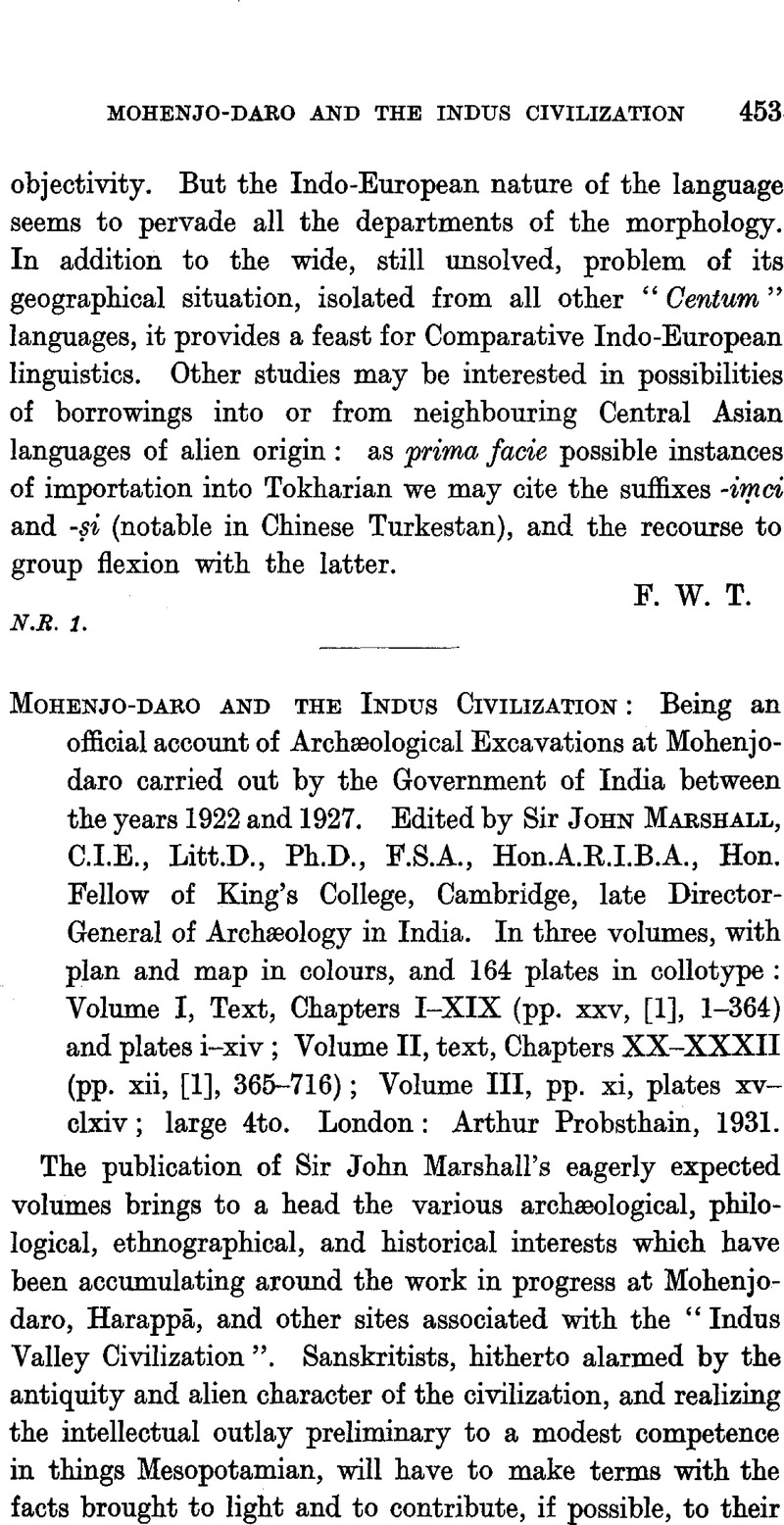No CrossRef data available.
Article contents
Mohenjo-Daro and the Indus Civilization: Being an official account of Archæological Excavations at Mohenjodaro carried out by the Government of India between the years 1922 and 1927. Edited by SirJohn Marshall, C.I.E., Litt.D., Ph.D., F.S.A., Hon.A.R.I.B.A., Hon. Fellow of King's College, Cambridge, late Director-General of Archæology in India. In three volumes, with plan and map in colours, and 164 plates in collotype: Volume I, Text, Chapters I–XIX (pp. xxv, [1], 1–364) and plates i–xiv; Volume II, text, Chapters XX–XXXII (pp. xii, [1], 365–716); Volume III, pp. xi, plates xv-clxiv; large 4to. London: Arthur Probsthain, 1931.
Published online by Cambridge University Press: 15 March 2011
Abstract

- Type
- Notices of Books
- Information
- Copyright
- Copyright © The Royal Asiatic Society 1932
References
page 454 note 1 The Ancient History of the Near East (1912), pp. 173–4.
page 556 note 1 Could it be the “Mound of the Confluence”, with mohen = muhān, muhānā, etc., on which see Professor R. L. Turner's Nepali Dictionary?
page 463 note 1 If this were one of the fish signs (No. cccxxi = Langdon, No. 175), then the inscription on ProfessorCook's, seal (JRAS. 1932, pp. 47–8) would conveniently mean “Of Axy son Az”Google Scholar.


